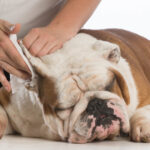Understanding your dog’s development is essential for providing the best care and training throughout their life. Just like humans, dogs go through various stages of growth, each marked by unique physical, emotional, and behavioral changes. But when exactly does a dog transition from an adorable puppy to a mature adult? In this article, we’ll explore the different phases of canine growth, from the exuberant puppyhood that pulls at our heartstrings to the wise serenity of adulthood.
By gaining insight into these stages, you’ll not only deepen your bond with your furry friend but also ensure they receive the appropriate support they need at every age. Join us as we navigate the fascinating journey of canine development and learn when to embrace your dog’s transition into adulthood!
Table of Contents
- Understanding Canine Growth Stages for Your Furry Friend
- Signs Your Dog is Transitioning from Puppy to Adult
- Nutritional Needs: Adjusting Your Dog’s Diet for Adulthood
- Socialization and Training Tips for Adult Dogs
- Q&A
- Final Thoughts
Understanding Canine Growth Stages for Your Furry Friend
Canine growth stages are crucial for understanding your dog’s development and needs throughout their life. Generally, dogs can be categorized into several key stages: puppy, adolescent, and adult. Each stage presents unique characteristics and behavior changes. Puppies, typically from birth to six months, are in their most formative phase, where they learn social skills and basic commands. This is the time for training and socialization, essential for a well-adjusted adult dog. As they transition into adolescence, around six months to two years, dogs may exhibit increased independence and test boundaries, making consistent training and guidance vital.
Once they reach adulthood, which varies by breed but generally occurs between one and three years of age, your furry friend will settle into their personality and behavior patterns. Adult dogs require a shift in their care routine, focusing more on exercise, mental stimulation, and nutrition. Consider the following points to ensure you support your dog throughout their growth:
- Regular Vet Check-ups: Essential for monitoring health and development.
- Balanced Diet: Tailored to their age, size, and activity level.
- Activity Level: Adjust walks and playtime as they mature.
Signs Your Dog is Transitioning from Puppy to Adult
As your furry friend matures, there are several noticeable changes that indicate they are transitioning from a playful puppy to a more composed adult. One of the most significant signs is a shift in their energy levels. While puppies are often full of exuberance and require frequent play sessions, adult dogs generally exhibit a more balanced temperament. You might find that your dog is less likely to engage in wild antics and more inclined to enjoy quiet moments, such as lounging beside you on the couch. Additionally, you may notice a decrease in destructive behaviors, as adult dogs become more adept at self-control and understanding boundaries.
Physical changes also play a crucial role in this transition. You may observe that your dog’s body structure begins to fill out, and they develop a more defined musculature. Their coat may also undergo changes, becoming smoother and shinier as they reach adulthood. Alongside these physical transformations, adult dogs typically experience a shift in their social interactions; they might show increased confidence in meeting new dogs or humans, often taking on a leadership role during play. Understanding these signs not only helps you recognize your dog’s maturity but also allows you to adjust their training and socialization accordingly for a seamless transition into adulthood.
Nutritional Needs: Adjusting Your Dog’s Diet for Adulthood
As your furry companion transitions into adulthood, their nutritional needs evolve significantly. It’s crucial to recognize that an adult dog has distinct requirements compared to a puppy. To ensure your dog maintains optimal health, consider adapting their diet to include balanced levels of protein, fat, and carbohydrates. Adult dogs typically require less protein and fat than growing puppies, as their energy levels stabilize. A well-structured diet might look like this:
- High-quality protein: Sources like chicken, beef, or fish are essential for muscle maintenance.
- Healthy fats: Incorporate omega-3 and omega-6 fatty acids for a shiny coat and healthy skin.
- Carbohydrates: Brown rice or sweet potatoes provide necessary energy without excess calories.
Regularly assessing your dog’s body condition and activity level can help you make informed decisions about their diet. Monitoring their weight and adjusting portion sizes can prevent obesity, a common issue in adult dogs. Additionally, it’s important to consider the life stage of your dog, as factors like breed, size, and activity level will influence their dietary needs. Below is a simple overview to guide you in adjusting your dog’s diet:
| Dog Size | Daily Caloric Needs (per 10 lbs) |
|---|---|
| Small (<20 lbs) | 40-50 calories |
| Medium (20-50 lbs) | 30-40 calories |
| Large (50-90 lbs) | 25-30 calories |
| Giant (>90 lbs) | 20-25 calories |
Socialization and Training Tips for Adult Dogs
Once a dog reaches adulthood, typically around one to two years of age depending on the breed, their socialization and training needs shift significantly. Adult dogs often require consistent reinforcement of their training to maintain good behavior. It’s essential to expose them to new experiences, people, and environments to prevent behavioral issues. Some effective ways to socialize and train your adult dog include:
- Regular Outings: Take your dog to parks, pet-friendly businesses, or dog events to help them interact with other dogs and people.
- Group Classes: Enroll in obedience or agility classes that emphasize positive reinforcement and help with socialization.
- Playdates: Arrange playdates with other friendly dogs to encourage healthy interactions.
Training should be an ongoing process, focusing on reinforcing good behaviors and correcting unwanted ones. Incorporate fun games and challenges to keep your adult dog engaged. Here’s a simple training schedule that can help:
| Day | Activity | Duration |
|---|---|---|
| Monday | Basic Commands Review | 15 mins |
| Wednesday | Socialization Outing | 30 mins |
| Friday | Fun Training Games | 20 mins |
By consistently engaging with your adult dog through socialization and training, you can strengthen your bond and foster a well-mannered companion ready to take on the world with you.
Q&A
Q&A:
Q1: At what age do dogs become adults?
A1: Dogs typically reach adulthood between 1 to 2 years of age, depending on their breed and size. Larger breeds often take longer to mature, while smaller breeds may reach adulthood sooner. Generally, small dogs are considered adults by around 1 year, while medium to large breeds may not be fully mature until they are 18 to 24 months old.
Q2: What are the stages of canine growth?
A2: Canine growth is generally divided into several stages:
- Neonatal Stage (0-2 weeks): Puppies are born blind and deaf, relying entirely on their mother for warmth and nourishment.
- Transitional Stage (2-4 weeks): Puppies begin to open their eyes and ears; they start becoming aware of their surroundings and begin to walk.
- Socialization Stage (3-12 weeks): This is a crucial period for learning social skills. Puppies should be exposed to different people, pets, and environments to develop positive behaviors.
- Juvenile Stage (3-6 months): Puppies become more energetic and curious. They may test boundaries and display a variety of behaviors as they learn about their world.
- Adolescent Stage (6-18 months): During this phase, dogs may exhibit rebellious behavior as they navigate their newfound independence. Training and socialization remain essential.
- Adult Stage (1-2 years): Dogs are considered adults, generally mature in behavior, and have settled into their personalities.
Q3: How can I tell if my dog is transitioning into adulthood?
A3: Signs of your dog transitioning into adulthood may include improved focus during training, a decrease in hyperactivity, and a more stable temperament. You may also notice physical changes, such as an increase in size and a more adult-like appearance.
Q4: Are there behavioral differences between puppies and adult dogs?
A4: Yes, there are several behavioral differences. While puppies are often more playful and exploratory, adult dogs tend to have a calmer demeanor and may be more settled. Adults usually have better impulse control, making them easier to manage in various environments. However, every dog is unique, and personality varies based on individual temperament and training.
Q5: How can I support my dog during the transition to adulthood?
A5: To support your dog during this transition, continue to provide consistent training and socialization opportunities. Engage them in regular exercise to help release energy and foster good behavior. Additionally, reinforce positive behavior with praise and treats to encourage good habits as they mature.
Q6: Does the breed of my dog affect its growth stages?
A6: Absolutely! Different breeds grow at different rates. For instance, giant breeds may continue to grow and develop until they are 2 to 3 years old, while small breeds might reach maturity by 1 year. Understanding your dog’s specific breed characteristics can help set realistic expectations for their growth and development.
Q7: When should I start spaying or neutering my dog?
A7: It’s essential to consult with your veterinarian for personalized advice on spaying or neutering your dog. Generally, many veterinarians recommend waiting until your dog has reached maturity, especially in larger breeds, as this can help prevent certain health issues and behavioral problems. Depending on the breed, this could be anywhere from 6 months to 2 years.
Q8: What health care considerations should I keep in mind as my dog matures?
A8: As your dog transitions into adulthood, regular veterinary check-ups are crucial. Keep an eye on vaccinations, dental care, and weight management. Maintaining a balanced diet tailored to your dog’s life stage and breed is vital for their overall health during this period. Regular exercise is also important to keep them strong and fit.
Q9: Can the adult stage also vary in length?
A9: Yes! The adult stage can vary significantly based on the dog’s size, breed, and overall health. While some dogs may remain active and youthful well into their senior years, others may start to slow down as they age. It’s crucial to continue with regular wellness checks and adjust care as necessary to meet their evolving needs.
Q10: Is there anything else I should know about my dog as they grow into adulthood?
A10: Each dog is unique, so being patient and attentive during their growth is key. Continue to train and socialize them throughout their life, as this helps maintain good behavior and strengthens the bond between you and your furry friend. Enjoy this journey together as your dog grows and changes!
Final Thoughts
understanding when a dog is considered an adult is essential for every pet owner. By recognizing the various stages of canine growth—from the playful puppy phase through to the mature adult years—you can better cater to your dog’s needs, ensuring they receive the appropriate care, training, and socialization at each stage of their life. Remember, every dog is unique, and factors such as breed, size, and individual temperament can influence their development. By staying informed and attentive to your furry friend’s changing needs, you can foster a happy, healthy, and fulfilling life together. Whether you’re welcoming a new puppy into your home or navigating the journey with an older dog, every phase of canine growth presents opportunities for bonding and understanding. Here’s to many joyful years ahead with your loyal companion!















